Filing for Chapter 13 gives people with a source of income the choice of devising a plan to repay some of their debt when they’re experiencing a financial hardship. This is why Chapter 13 is also known as the “wage earner’s plan.”
In the instance that you’ve already filed for Chapter 13 bankruptcy, yet you are still experiencing a financial hardship, there are options. If you find yourself in this predicament do not simply stop making payments to your trustee. Once you do that you can expect your bankruptcy case to be dismissed without discharge.
Don’t ignore your problem. Speak with your bankruptcy attorney about a Hardship Discharge. This type of discharge will clear debts and give you a fresh start, even though your repayment plan has not been completed.
This option is available to you if:
- The failure to complete your repayment plan was due to circumstances beyond your control.
- Your creditors received at least what they would have gotten out of a Chapter 7 liquidation case.
- Modification of your plan isn’t possible. For example, you sustained an injury or illness that prevents adequate employment that would finance a modified plan.
Hardship Discharges do not apply to any debts that are non-dischargeable, so it’s much more limiting than a Chapter 13 bankruptcy. There are many facets to a Hardship Discharge which is why it is important to speak to your bankruptcy attorney.
Do not feel trapped by your finances. You do have options for dealing with your debt. Contact Minnesota bankruptcy attorney Gregory Wald at 952-921-5802. He will go over your Chapter 13 case and give you all the best options specific to your situation.


